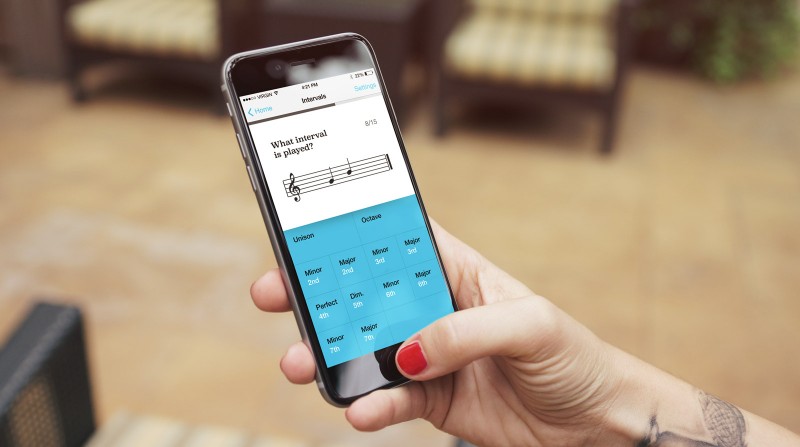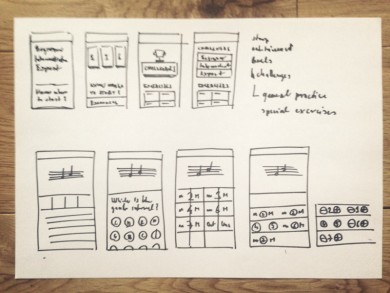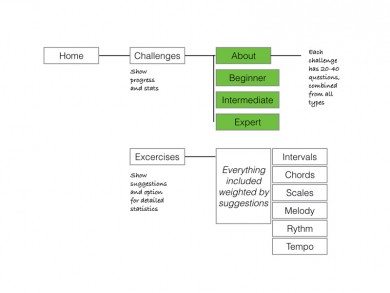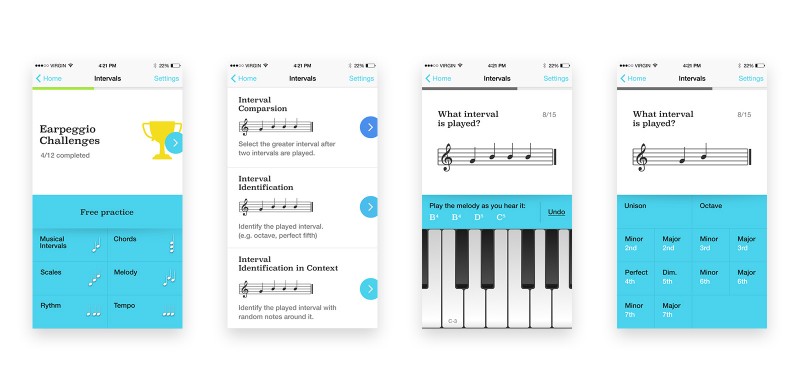
Earpeggio is a musical ear training app. My friend Balázs created it as part of his thesis, and although it included most of the functionality, the experience required some more thought to take the app to the next level.
With the redesign our primary goal was to guide the users through the training, according to their current skills.
By observing users of the previous app, we have noticed a few things:
- most of them wasn’t sure where to start
- the exercises were too open ended, and some people got confused about when the exercise finishes
- for some of the tests, user input was a bit tedious
First, we have set out to solve the guidance part. By taking inspiration from Duolingo’s approach, we have made the challenges the key part of the experience. We have created a series of challenges that seamlessly lead the user from beginner to expert. In each one we have combined different types of tasks (eg. chord identification, interval identification, etc.), according to difficulty.


At the same time we also wanted to provide the option to practice specific areas, but were looking for a better way to present them. By keeping statistics of the results, the app is able to suggest as to what types of tasks need more practice. This way we can recommend specific areas, and keep all skills balanced across the different types of exercises.
The third problem was the input method used. The original app employed a list, but this often required scrolling, and the available options were frequently changing. As a solution, we have created a fixed grid for the musical intervals that users could memorize over time, and recall from muscle memory – almost like playing an instrument! For other types of tasks, we are showing a piano keyboard, and a convenient undo option.

